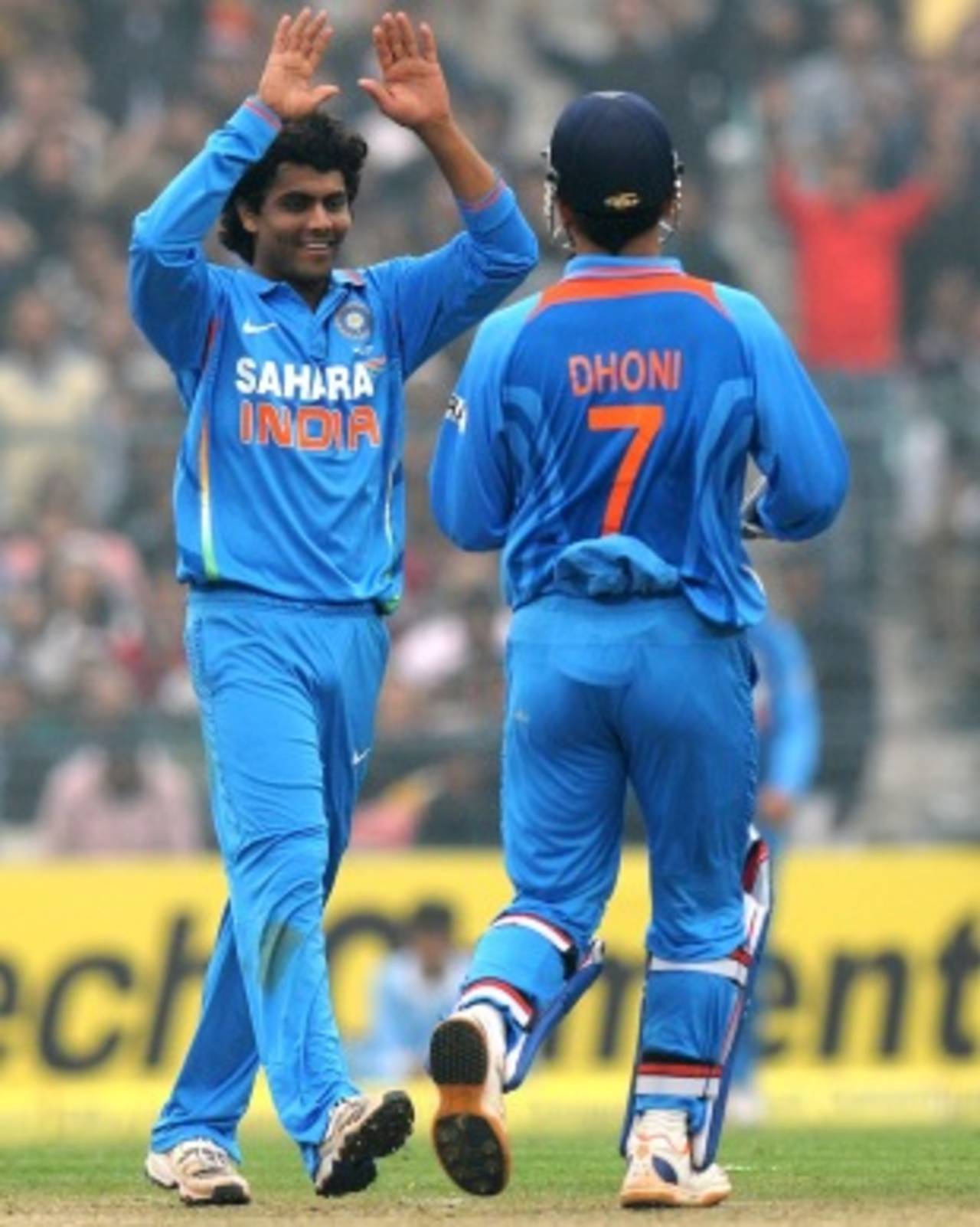"I don't want to sound arrogant, but it seemed easy when (Suresh) Raina and I were in the middle, with five fielders in the circle,"
MS Dhoni said after India's
nine-run defeat to England in Rajkot. Dhoni is regarded among the best finishers in ODI history, and it is a sign of his confidence that even with the asking rate in double-digits and the last specialist batting pair in the middle, he thought his team were in charge.
One of the reasons for that self-belief is that India's home one-day success has been built on their batting might, especially on flat tracks. The Indian bowling has rarely been short of a weak link or two, and victories have generally arrived on the basis of an "anything the opposition scores, we can chase" mentality or a "bat first and make enough to cover for the shaky bowling" thinking.
It may have been the first match at the Saurashtra Cricket Association stadium, but the track was as flat as anything dished up at that batting beauty that was the Madhavrao Scindia ground, Rajkot's previous international venue.
These are the sort of conditions India's batsmen are nearly unstoppable in. Witness the dramatic shift in fortunes for the likes of Gautam Gambhir and Yuvraj Singh. In the recent Pakistan series, with the ball swerving around and Saeed Ajmal spinning it both ways, you were expecting dismissals every over, so nervy were the Indian batsmen. In Rajkot, they were regularly finding the boundaries.
India may have never chased as big a target at home as they were asked to in Rajkot, but the super-quick outfield gave them another reason to believe. "It was really fast," Dhoni said. "On a normal ground this could have been a 270-280 score. Once you push into the gap (here) there's a boundary for you."
Despite the outfield, a string of soft dismissals and a top-score of 61 meant India ended up short. The other reason for the chase derailing is that age-old conundrum in Indian one-day cricket: whether to go with seven specialist batsmen or not.
Dhoni, usually the most imperturbable of players, showed his frustration at Raina's chip back to the bowler James Tredwell in the 42nd over, perhaps realising that he'd have to provide all the big hits if India were to get the remaining 83 runs.
Ravindra Jadeja has proved effective with the ball, especially under the new rules forcing five fielders in the circle, but isn't quite the No. 7 batsman needed when a high-scoring game is headed towards a tight finish. He has muscled some mighty sixes in the IPL, though a similar ability hasn't been replicated at the international level, especially with the team in trouble.
After the failure of Yusuf Pathan in that spot, the headache was solved during the 2011 World Cup by Yuvraj taking over as the fifth bowler. With the new rules forcing Dhoni away from his dependence on part-time bowlers, Jadeja is getting picked as an allrounder ahead of specialist batsmen Rohit Sharma and Cheteshwar Pujara.
The problem could perhaps be solved once
Irfan Pathan returns to full fitness. He is a player of whose batting India have expected a touch too much at times, but he could provide the power needed at No. 7 besides plenty of overs with the ball. Add in Jadeja at No. 8, followed by R Ashwin at No. 9.
The return of Irfan could also lead to another halt to the limited-overs career of Ishant Sharma, who India have turned to presumably because the selectors want a quick bowler with experience, given that Bhuvneshwar Kumar, Ashok Dinda and Shami Ahmed are all new at the international level and a host of others are injured.
Ishant hasn't featured regularly in the one-day side for around three years, and in Rajkot he showed why. Despite bowling tidily with the new ball - including two maidens - he was battered for 86 runs in 10 overs. He hardly bowled any yorkers, regularly allowing the batsmen to get under the ball and put it away.
Ishant's off-colour performance also leaves Dhoni pondering how to sort out that other familiar problem for India - the death bowling. "We have to look how good Shami Ahmed is when it comes to bowling yorkers and wickets like these where there is not much to offer for the fast bowlers," he said. "That's why we went for Dinda (today), because he is experienced and he executes the yorkers well." Perhaps the next match in Kochi is the place to find out.
Siddarth Ravindran is a senior sub-editor at ESPNcricinfo
